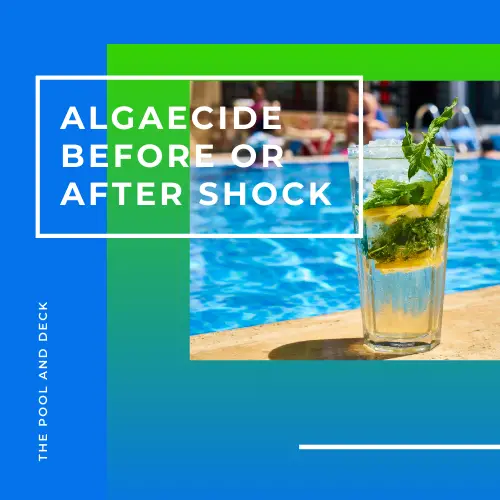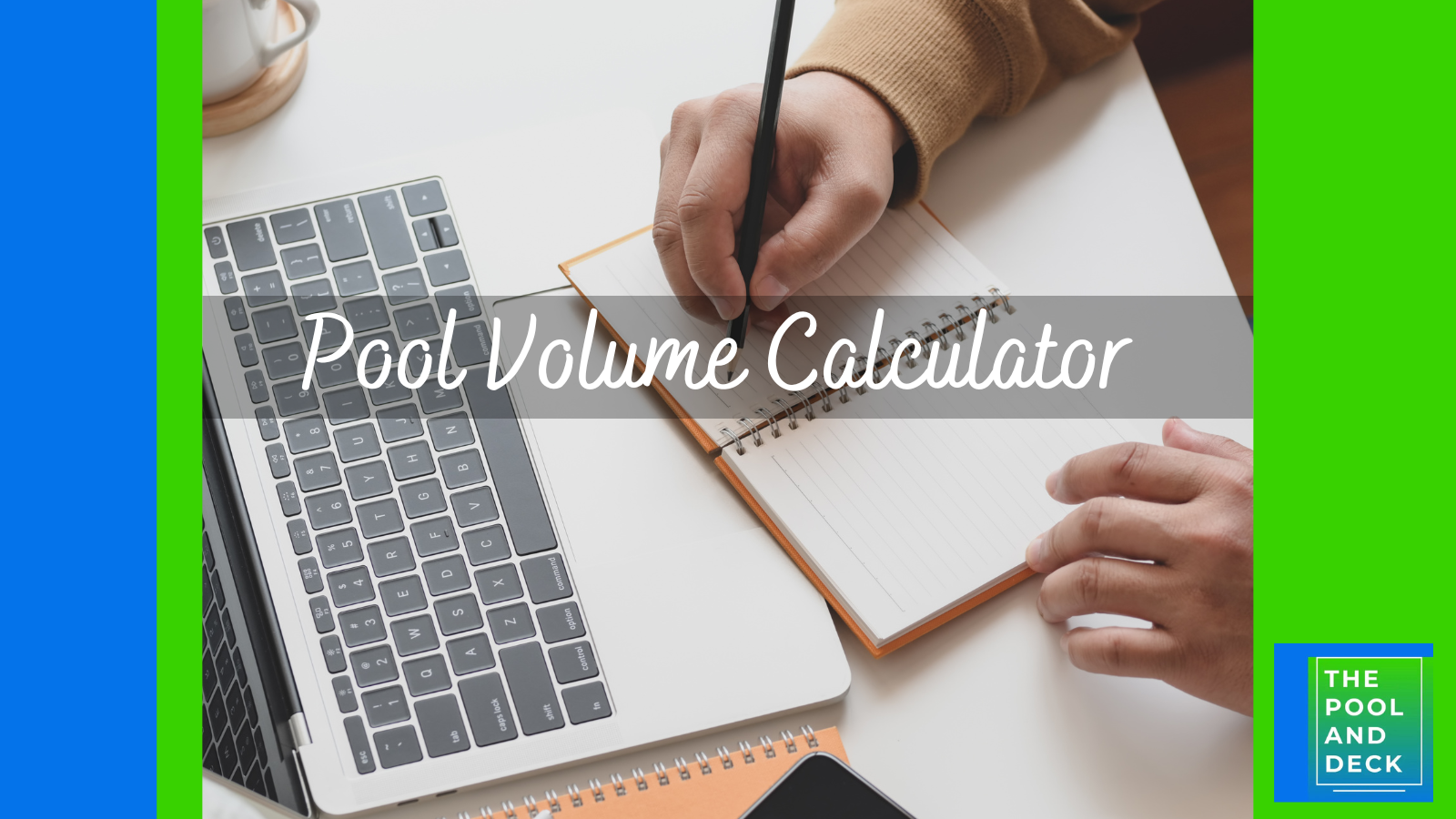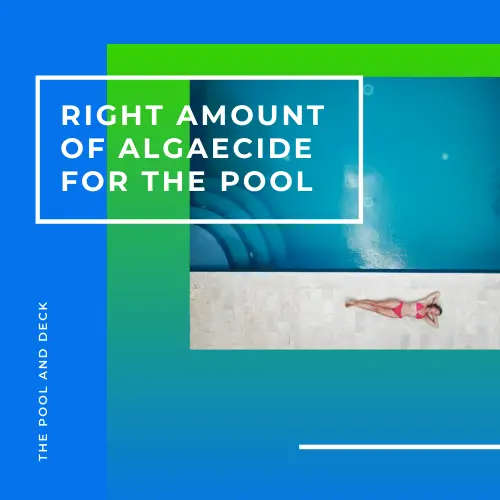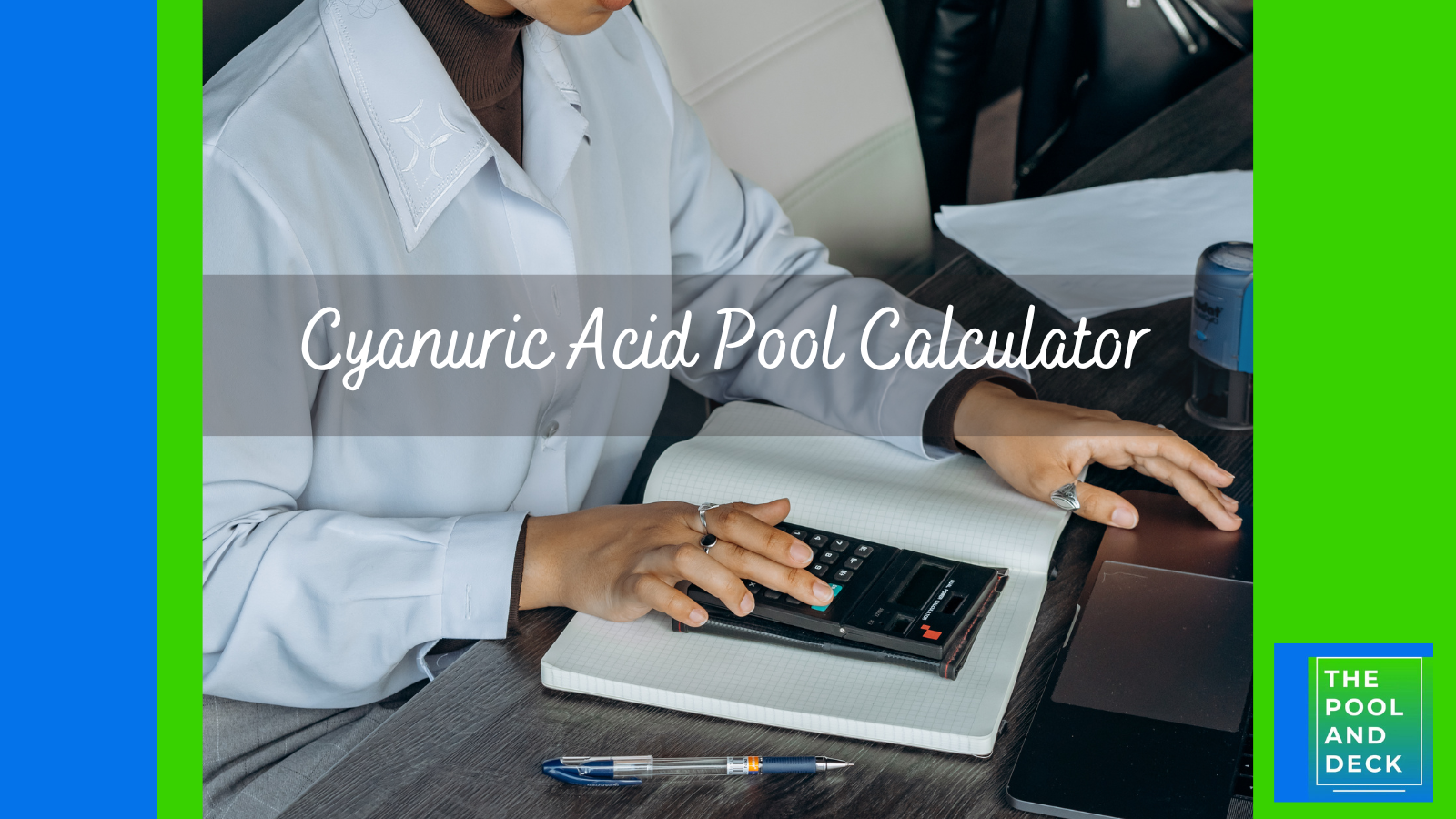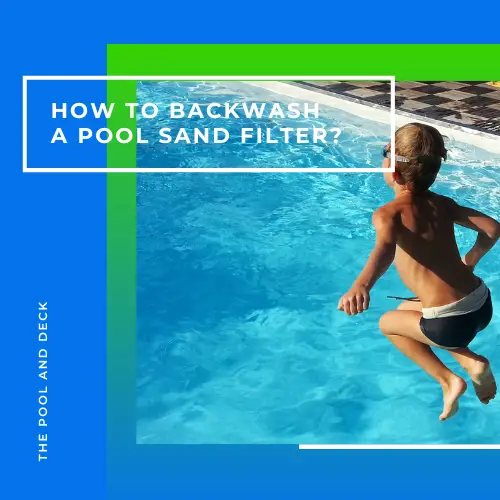Do You Need Cyanuric Acid For Indoor Pool? (The Truth!)
thepoolanddeck.com is a participant in the Amazon Services LLC Associates Program, an affiliate advertising program designed to provide a means for sites to earn advertising fees by advertising and linking to Amazon.com . The website is also an affiliate of a few other brands. The affiliate links never increase your purchase price. We do appreciate your support. Thank you very much!
Table of Contents
Do Indoor Pools Need Cyanuric Acid?
CYA, acronym for Cyanuric Acid is a Stabilizer. It is necessary to protect the rapid depletion of Chlorine, the most effective pool sanitizer, from UV rays in sunlight. OK, you get that! But do you need Cyanuric Acid for your Indoor swimming Pool? It is already protected from direct sunlight!
An Indoor swimming Pool does not need the Cyanuric Acid level of 30-50 ppm, recommended for outdoor pools. However, a lower level of 10-20 ppm should still be maintained. This will increase the life & effectiveness of Free Chlorine (FC) and reduce bacteria growth.
The reality is that most indoor pools do have windows, sometimes even large french doors. You may want an indoor pool that is protected from the elements, but you still want it to be well lit by natural light.
The UV rays, even in indirect light, are able to speed up the depletion of Free Chlorine (FC) levels in the indoor pool. You will need to replenish Chlorine more often or run the risk of Free Chlorine (FC) levels falling below 1 ppm.
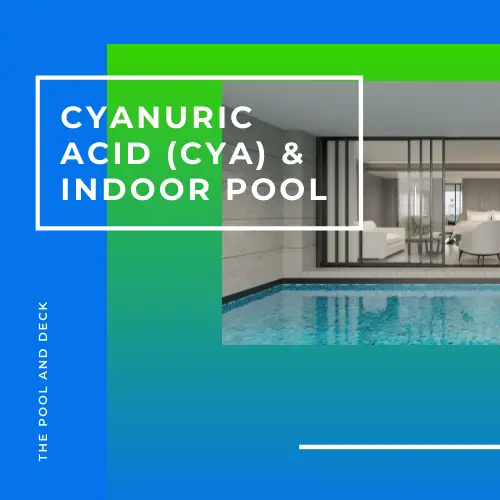
In this post I am going to explain the basics and best practices for keeping your indoor pool sanitized and free of germs & bacteria. So let’s dive in.
Do Indoor Pools Need Chlorine?
Just because a pool is indoors does not mean that it is shielded from getting infected by dangerous germs & bacteria. Pathogens can enter a swimming pool, including indoor pools, through the swimmers themselves, their clothing and pool recreational toys.
Once in, they multiply, feeding on body fluids secreted into the pool and other contaminants. The germs & bacteria are too small to be trapped and removed by pool filters. The only way to get rid of them is to use a chemical disinfectant.
When it comes to disinfecting your swimming pool and keeping it sanitized, Chlorine will be on the top of your list of options. The non-chlorine alternatives are often a lot more expensive and a lot more difficult to administer and maintain.
Chlorine is a cheap, convenient and an effective sanitizer for pools, both indoor & outdoor.
I must admit that use of Chlorine, especially in Indoor Pools, does come with some health risks. Chlorine combines with contaminants to form “chloramines” which are considered to be harmful to respiratory health.
But do not throw out the baby with bathwater, yet. The solution is to closely monitor the amount of chlorine used and to ensure really good ventilation in the Indoor Pool space.
Chlorination and even that little bit of sunlight necessitates the use of Cyanuric Acid in an Indoor Pool.
Which Chlorine is Best for an Indoor Pool?
There is Chlorine and then there is Chlorine. Chlorine for pools are not all the same. There are basically two types of Chlorines available for use as sanitizers for swimming pools.
Stabilized Chlorine
Stabilized Chlorine has Cyanuric Acid (CYA) built into the formula. Very convenient as you do not need to add a dose of Cyanuric Acid (CYA) after adding Chlorine to the pool. Not very helpful, if Cyanuric Acid (CYA) levels in your pool are already high and you do not want to add any more!
The most popular stabilized chlorine for pools are:
- Granules (Dichlor)
- Tablets (Trichlor)
Unstabilized Chlorine
Unstabilized Chlorine does not have any Cyanuric Acid (CYA) in it. This is quite useful if the Cyanuric Acid (CYA) levels in your pool are high.
I strongly recommend using unstabilized chlorine for Indoor Pools as you want Cyanuric Acid (CYA) levels to be in the 10-20 ppm range.
After adding unstabilized chlorine, check the Cyanuric Acid (CYA) level and add only if it is lower than 10 ppm.
The most popular unstabilized chlorine for pools are:
- Sodium Hypochlorite – NaClO (High concentration Bleach)
- Calcium Hypochlorite – Ca(ClO)2 (Referred to as Cal-Hypo)
Can you Swim in a Pool with High Cyanuric Acid?
We need to maintain a Free Chlorine (FC) level of 2-4 ppm to ensure that the germs, bacteria and algae are being killed and the pool is safe to swim. The ideal level is 3 ppm of Free Chlorine (FC).
We also need Cyanuric Acid (CYA) in the pool to protect the Cyanuric Acid (CYA) level should be 30-50 ppm. It should certainly not exceed 100 ppm. In case of an indoor pool the Cyanuric Acid (CYA) level should be 10-20 ppm.
The chlorine added to the pool is being spent in neutralizing the pathogens and being depleted by UV rays. So you need to keep adding chlorine to maintain Free Chlorine (FC) levels of between 2 and 4 ppm.
But the Cyanuric Acid (CYA) remains in the pool and the levels keep going up.
It is not safe to swim in a pool where the Cyanuric Acid (CYA) level is much higher than the upper limit of the recommended level.
There have been numerous studies published online that show the impact that CYA has on chlorine. Specifically about how CYA drastically lowers killing speed (which increases Contact Time, or CT), and how it plummets HOCl concentrations (chlorine strength)
Orenda Technologies
The toxicity of Cyanuric Acid (CYA) is extremely mild and a concentration of 100 ppm is not a health hazard to humans. However, high levels of Cyanuric Acid (CYA) reduce the effectiveness of chlorine in sanitizing your pool.
Swimming in a pool with high Cyanuric Acid (CYA) level is a health risk as the pathogens may not have been neutralized, in spite of Free Chlorine (FC) level being within 2-4 ppm.
So do keep an eye on the Cyanuric Acid (CYA) level. You can bring down the CYA level by diluting the pool (Drain partly and replace with fresh water) or by using a CYA Reducer (see below for recommended product).
Recommended Swimming Pool Chemicals
Best Liquid CYA Free Pool Shock
Champion Liquid Chlorine (Sodium Hypochlorite) Pool Shock (12.5%) is easy-to-use, fast, and effective. This Pool Shock does not have Cyanuric Acid (CYA-stabilizer) and will not result in build-up of scale. Order from Amazon using the link below:
Liquid Chlorine Pool Shock (Case – 4 Gallons) – 12.5% Sodium Hypochlorite
Best Cal-Hypo Pool Shock
HTH Super Shock! Pool Shock Treatment is the 4-in-1 powerful pool shock designed to boost chlorine levels and kill and prevent bacteria and algae for a clear, healthy pool. Each pound of Super Shock! packs a powerful punch, treating 13,500 gallons and restoring crystal clarity in just 24 hours. This pool shock is great for all pool types and won’t fade your pool liner. Order from Amazon using the link below:
HTH 52026 Super Shock Treatment Swimming Pool Chlorine Cleaner, 1 lb (Pack of 12)
Best Stabilizer and Conditioner
Rx Clear Stabilizer and Conditioner will reduce chlorine loss caused by the UV radiation from the sun. Adding stabilizer in the spring greatly increases chlorine effectiveness and will actually cut chlorine consumption. Rx Clear Stabilizer Contains 100% Cyanuric Acid. Order from Amazon using the link below:
Rx Clear Swimming Pool Stabilizer and Conditioner
Best CYA Reducer
Bio-Active, a new biological and natural approach, has been proven to reduce Cyanuric Acid (CYA) levels by disintegrating it at the molecular level. It won’t cause adverse effects on your pool and is also non-toxic, non-polluting and completely biodegradable. Order from Amazon using the link below:
Bio-Active Cyanuric Acid Reducer
Thank you very much for reading the post. I do hope you found it informative and helpful.


